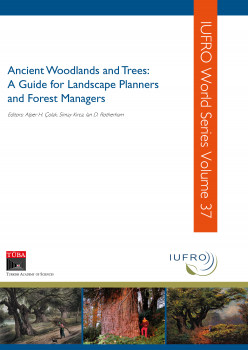Tree abundance, density and age structure: the key factors which determine species-richness in saproxylic invertebrates

Tree abundance, density and age structure: the key factors which determine species-richness in saproxylic invertebrates
Conservation should be based on practical observation rather than unstable theory (Rackham, 2006). This is a critically important point - far too much woodland conservation is currently based on an unproven hypothesis of the structure of the forests which spread across Europe following the last Ice Age - the high forest hypothesis. This is especially the case with our most precious sites, the Special Areas of Conservation (SACs), where practical observation would suggest that current approaches to ‘minimum intervention’ management will inevitably lead to decreasing species richness as a result of decreased sun penetration and increased shading. This chapter will focus on the specialist invertebrates which depend upon the natural decay and degradation of the dead woody tissues produced by trees and shrubs as they develop and age. It will discuss the importance of the age structure of the tree population, the spacing between trees, and the total numbers of trees, as well as the importance of connectivity across the landscape. A basic understanding of the key aspects of tree biology and tree ecology - the aging and decay processes of trees as well as tree form and tree habitats - is an essential tool for people involved in the conservation management of wood-decay invertebrates. A good appreciation of tree terminology is also essential in order to successfully achieve conservation of tree-dependent wildlife The secret of successful conservation of these wooddecay invertebrates is to think landscape scale - the largest sites support the greatest range of species (Alexander, 2004a, b). It is also important to appreciate that the widest variety of wood-decay habitats is produced by an open-grown tree, where the tree has space to develop its full potential of form and structure (Alexander, 2007; Green, 2010) (Photograph 1 and 2). Only an opengrown tree has good lateral branch development and the potential to support the full range of wood-decay fungi and invertebrates which need decaying wood in the lower crown (Alexander, 2002) (Photograph 3, 4 and 5). Only an open-grown tree can survive into old age, as natural crown retrenchment with age results in a reduced crown height and leaves the tree very vulnerable to over-shading by neighbouring younger trees. Retrenched trees are referred to as ‘ancient trees’ and support many of Europe’s rarest wood-decay invertebrates. The term ‘veteran tree’ refers to trees which have substantial development of decaying woody tissues resulting either from natural ageing processes or from physical damage - an ‘ancient tree’ is a type of ‘veteran tree’ but not all ‘veteran trees’ are ancient (Ancient Tree Guide No.4) . If conservation of wood-decay communities is an objective of site management then it is vital to consider the long-term production of suitable deadwood habitats from the living trees. It is especially important to base conservation action on the trees, rather than on such abstract concepts as ‘woodland’ or ‘forest’. Trees are real, but terms such as ‘woodland’ and ‘forest’ mean different things to different people (Alexander, 2008).
